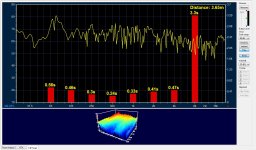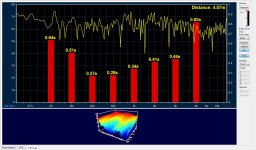socfan12
Active member
- Joined
- Apr 5, 2013
- Messages
- 3,579
- Thread Author
- #1
For the past 2 weeks, I've been spending quite a bit of time optimizing my speaker/listening positions, trying to ameliorate a mid-high bass hump issue. I think I've mostly succeeded, but it's certainly not perfect.
My room is 17x23 with about an 8' ceiling (7.5 some sections, 8.5 in others). After playing a number of bass laden tracks, my speaker/listening position is as follows:
I don't think this is a typical Wilson setup per se, but this gives the best balance of bass response/imaging/soundstaging. Like I said, not perfect, but treatments should address that. I got the idea to try this after visiting Audio Arts who had similar dimensions speaker/listener dimensions.
Was curious what other Alexia owners (or others) have. If anyone has used the Jim Smith setup service for their Alexias, curious what dimensions were found.
thx in advance.
My room is 17x23 with about an 8' ceiling (7.5 some sections, 8.5 in others). After playing a number of bass laden tracks, my speaker/listening position is as follows:
Speaker inside corner to front wall: 4.5'
Speaker outside corner to side wall: 2.5'
Tweeter-to-tweeter: ~10'
Listening Position to tweeters: ~15'
Speaker outside corner to side wall: 2.5'
Tweeter-to-tweeter: ~10'
Listening Position to tweeters: ~15'
I don't think this is a typical Wilson setup per se, but this gives the best balance of bass response/imaging/soundstaging. Like I said, not perfect, but treatments should address that. I got the idea to try this after visiting Audio Arts who had similar dimensions speaker/listener dimensions.
Was curious what other Alexia owners (or others) have. If anyone has used the Jim Smith setup service for their Alexias, curious what dimensions were found.
thx in advance.


